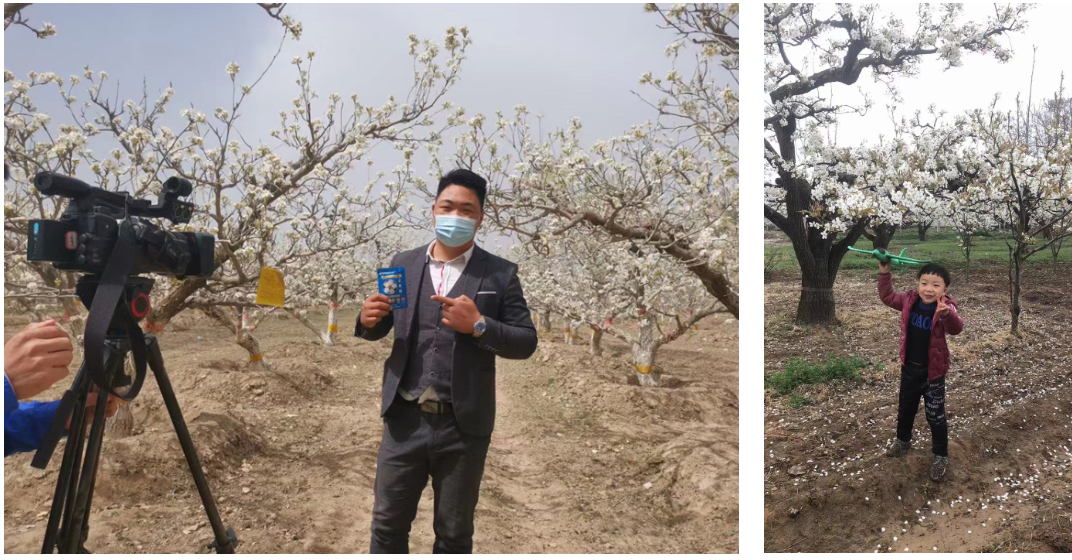Oct . 21, 2024 03:44 Back to list
Investigation of China Pear Pollen Germination and Its Implications for Crop Production
The Germination of China Pear Pollen A Vital Process for Cultivation
Pollen germination plays a crucial role in the reproduction of flowering plants, including the beloved China pear (Pyrus pyrifolia). As an essential part of the plant's fertilization process, pollen germination leads to the production of fruit and seeds, vital for the continuation of the species. Understanding the mechanisms behind China pear pollen germination can offer insights into effective cultivation techniques and improve overall yield.
The Importance of Pollen Germination
Pollen grains are the male gametes of flowering plants, and they must germinate to reach the female ovule, facilitating fertilization. In the case of the China pear, pollen is transferred from male anthers to the female stigma through various means, which can include wind, insects, or manual pollination. Once the pollen settles on a receptive stigma, it hydrates and initiates the germination process. This is critical because successful fertilization leads to fruit development, making it essential for both agricultural and ecological balance.
Environmental Factors Influencing Germination
Several environmental factors influence the germination of China pear pollen, including temperature, humidity, and the composition of the environment. The optimal temperature range for pollen germination typically lies between 20°C and 25°C. Temperatures higher or lower than this range can significantly hinder the process. Similarly, adequate humidity is required; too much can cause the pollen to become non-viable, while too little can impede the hydration process necessary for germination.
Moreover, the presence of sufficient sugars and minerals can enhance pollen viability. In many cases, the development of artificial germination media, which includes essential nutrients, can also be beneficial for controlled research and cultivation purposes. The right combination of these elements leads to accelerated growth of the pollen tube, ultimately leading to successful fertilization.
Analyzing Pollen Viability
china pear pollen germination

For horticulturists and researchers, determining the viability of China pear pollen is critical. Viability influences the chances of successful fertilization and subsequent fruit set. To measure pollen viability, various methods including stain tests or germination assays can be applied. These tests help indicate the quality of the pollen, allowing growers to select only the most viable grains for pollination efforts.
In recent years, advancements in technology have enabled more sophisticated approaches to studying pollen viability. Modern techniques such as fluorescence microscopy and molecular assays facilitate a more detailed understanding of the characteristics of high-quality pollen and its conformational changes during germination.
The Role of Pollinators
In addition to environmental factors, the role of pollinators cannot be overstated. Pollinators such as bees play a vital role in transferring pollen between flowers, ensuring effective fertilization. The interaction between flowers and their pollinators is a finely-tuned relationship; for optimal germination and fertilization rates, it is important to manage local ecosystems in ways that support pollinator health.
In areas where cultivated China pears are grown, farmers may benefit from maintaining native plant species that attract bees and other pollinators. Additionally, minimizing the use of harmful pesticides can help protect these essential workers in nature, further increasing pollen transfer efficiency.
Conclusion
Understanding the germination of China pear pollen is essential for effective fruit cultivation and can significantly impact crop yield. By studying the environmental factors affecting germination and employing proper techniques for assessing pollen viability, farmers can enhance their cultivation practices. Moreover, taking into account the role of pollinators in this process is vital for ensuring sustainability in agricultural systems. As the demand for fruit production continues to rise, continued research and attention to the intricacies of pollen germination will be critical in maximizing yields and promoting plant health in the changing global climate. Ultimately, the successful germination of China pear pollen not only benefits farmers but also supports biodiversity and food security in our world.
-
Premium Cherry Pollen for Pure Pollination & Different Types
NewsJul.30,2025
-
Artificial Pollination Solutions for Various Plant Pollen Types
NewsJul.29,2025
-
Artificial Pollination Solutions for All Plant Pollen Types
NewsJul.29,2025
-
Premium Plant Pollen for Pure Pollination & Pollen Block Solutions
NewsJul.29,2025
-
Artificial Pollination Solutions for Efficient Crop Yields
NewsJul.28,2025
-
Premium Cherry Pollen for Pure Pollination & Different Types of Pollen
NewsJul.28,2025